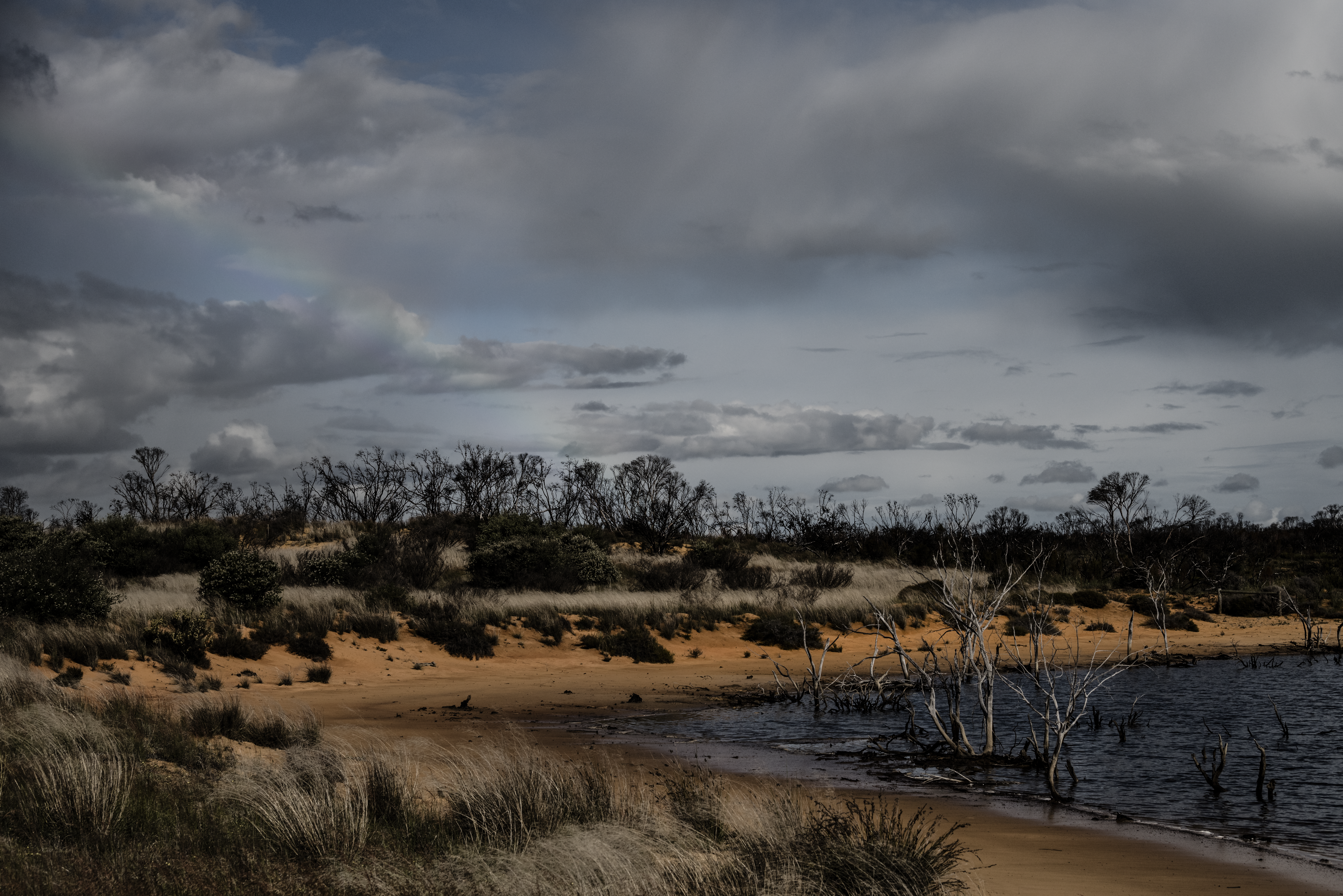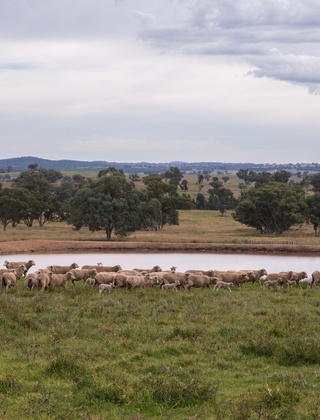Water-Smart Wool: How to Make the Most of Every Drop
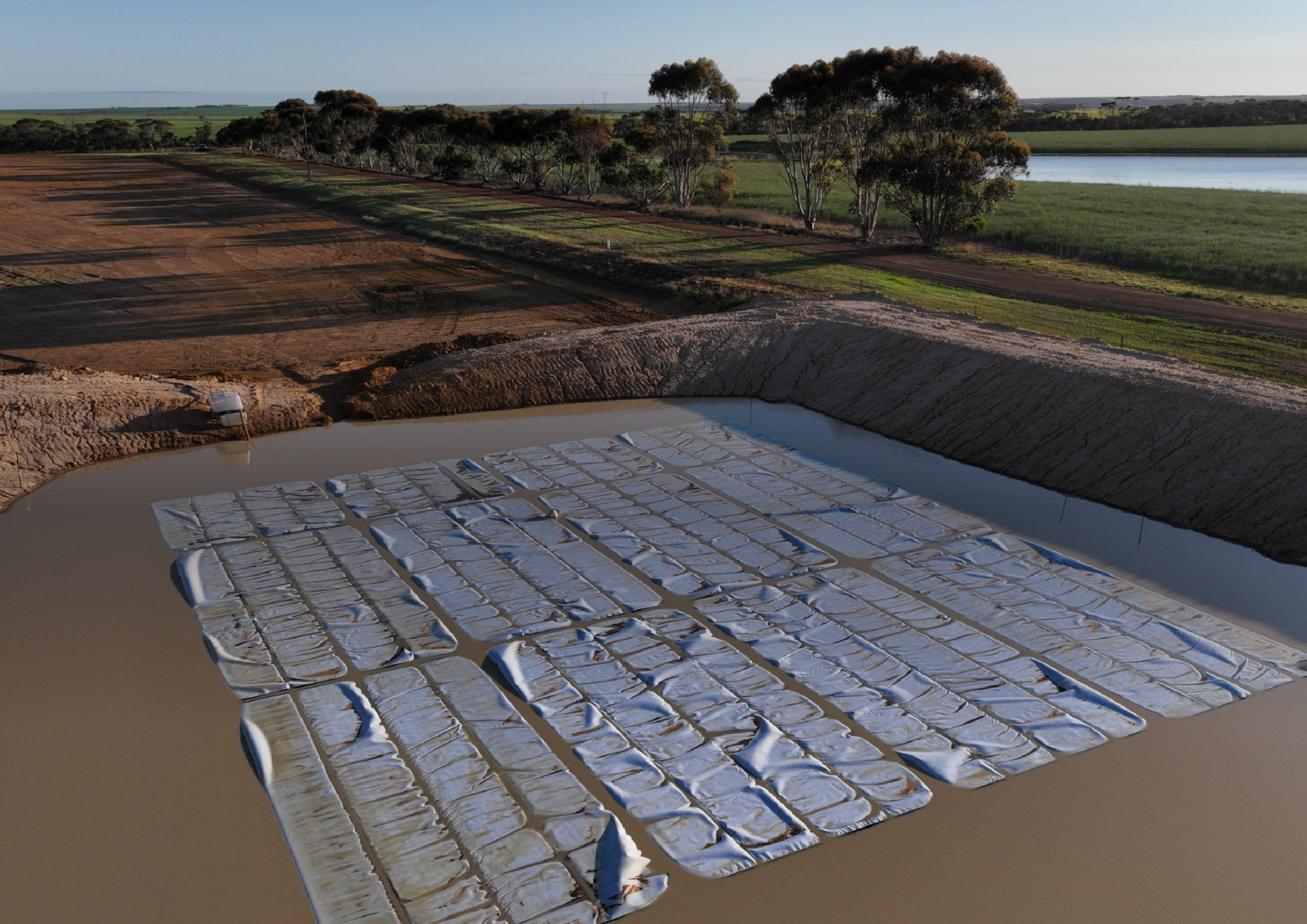
Getting started with water-smart management on-farm can boost productivity and future-proof your wool business. It’s not just about surviving dry seasons — understanding your water resources helps improve efficiency, sheep performance and profitability. This article breaks down the basics, including where water challenges lie, how to assess your system using simple tools, and what practical steps woolgrowers are already taking to make their water work for them.
Getting started with water-smart management on-farm is becoming increasingly essential for woolgrowers wanting to stay viable, profitable and future-ready.
A recent AWI Extension WA webinar brought together water expert Associate Professor Nick Callow (UWA) and woolgrowers Michael Wright (Rhodes Pastoral) and Wayde Robertson (Yalup Farm) to break down some water-smart farm management strategies. The key takeaway: understanding and improving your farm’s water security isn't just about surviving the dry seasons; it's about making smart decisions every year to boost your bottom line and secure long-term success. You can check out the full webinar here.
Why All the Fuss About Water Management?
The climate is changing, impacting rainfall patterns and reliability. As Nick Callow explained, many farms still rely on water infrastructure from the 1960s and '70s, which simply isn’t effective enough to cope with today's changing rainfall.
In the average or above-average rainfall years, water-smart practices allow you to effectively capture and store excess water, maximising the buffer for future dry spells.
In the dry years, these practices become critical for conserving existing supplies and optimising water use efficiency, which stabilises livestock health and performance.
Relying on dozens of small, inefficient dams can leave you vulnerable, with all of them potentially running dry in the same week during a drought. A diversity of dam sizes with well-maintained catchments is crucial.
Production Demands & Profitability
As you invest in high-quality Merino genetics, the demand for high-quality water increases. Michael Wright considers good quality water as integral to his investments in good genetics, stating, "Quality water equals quality livestock."
Poor water quality (especially at the end of a long dry season) reduces feed intake and productivity. Therefore, treating water security like any other production decision leads to significant financial benefits. Proactive water management means you aren't forced to sell stock during tough times when prices are down, allowing you to make strategic, not reactive, decisions.
Getting Your Head Around Your Farm's Water System
We can break down water management into four key components. Focusing on these areas will help you build a more resilient system:
- More Runoff: The most common problem with a dam isn't its size, but its catchment. The goal is to get more water into your dams, especially from the smaller rainfall events that some water catchment systems often don't capture. Pasture/crop paddock runoff is unreliable. Some water-smart strategies to help with runoff include:
- A well-maintained roaded catchment (runs on 8-12mm) is the minimum standard
- Use of repurposed tarps in catchment areas can help capture additional rainfall. Can start runoff after just 0.8mm of rain
- Subsurface drains can help top up the dam or tank in average to above-average years
- Keeping Water in the Dam: Once water is in, you need to keep it there. Evaporation and leakage can account for huge losses; dams can lose over 1.5 metres of water to evaporation annually. Water-smart practices to retain more water include:
- Dam covers can reduce evaporation loss by up to 40%
- Vegetation-covered dams e.g., Paperbark trees 3-4m tall, placed around dams can decrease evaporation by up to 30%
- Water Quality: It's not just a quantity story. High-quality water enhances livestock, health, weight gain and productivity. Better quality water can also improve the efficacy of chemical spraying for mixed-cropping farmers
- Smarter Planning: Using tools to understand your water balance allows you to model different strategies and make informed decisions without having to do costly trials on-farm
Starting Your Water-Smart Journey with Practical Tools
You don't need to be a hydrologist to improve your water security. The experts shared simple tools and high-impact strategies that you can start using today:
Tools of the Trade
- Handheld Salinity Meters - Michael Wright equips his staff with these to constantly monitor water quality across the property—having one of these in the ute is an essential first step
- Water Evaluation Platform (WEP) - This online tool (developed from the Water Smart Dams project) pulls in meteorological data specific to your property. It allows you to model scenarios, like changing your catchment size or adding dam covers, to see the real impact on your water security before you spend a dollar
Focus on the Big Hitters
- Catchments are Key - The most typical problem with a failing dam is its catchment, not its size. Prioritise maintaining and improving your catchments
- Fix Leaky Dams First - Treating leaky dams is often the single cheapest way to secure more water, costing as little as 50 cents to a dollar per kilolitre
- Don't Set and Forget - Roaded catchments need regular maintenance, like grading and weed control, to keep them performing well year after year
Water-Smart Woolgrower Success Stories
Woolgrowers Michael Wright and Wayde Robertson showed that a combination of ongoing maintenance of the basics and trialling innovations is key to water-smart management.
Michael Wright’s Key Insights (Rhodes Pastoral):
- Strategic Investment - They invested in four large, key dams in strategic locations with good catchment areas, which efficiently support their 54,000 sheep and 1,700 cattle. Michael explained that “They have a lot of mouths needing water, which is the reason why the business has invested heavily in water security."
- Cool Water is Crucial - By burying pipes 600-700 mm deep, they ensure livestock get cool water, which is particularly important in finishing pens to maximise feed utilisation and growth. “It is very important for livestock that they drink cool water and not hot water out of troughs" says Michael.
- Technology When Needed - They built a bespoke reverse osmosis desalination plant to turn an extremely salty dam (around 24,000-25,000 ppm) into a highly valuable source of quality water for their operation. Michael went on to say that the plant does between 30 and 40,000 L of beautiful quality water. “[The plant has] really got us through some tough times back 10-12 years ago when we were getting a bit low on stock water before we really decided to do something about it and improve our dam systems.”
Wayde Robertson’s Key Insights (Yalup Farm):
- Dam Covers for Incremental Gain - Wayde trialled a floating dam cover, achieving an overall reduction of 25-40% in evaporation. He sees them as a "quick easy solution" for smaller, high-value dams where water must be preserved. Wayde explained that “As the dam gets lower, the cover gets more effective. Certainly, late in that March, April period, the cover's getting more and more effective for you at saving water."
- Subsurface Drainage for Dual Benefit - Experimenting with subsurface drains in waterlogged areas not only improves crop and pasture growth but also provides high-quality water to top up dams in average to wet years. Most recently, Wayde has effectively used a slotted Pipe with a coarse aggregate to improve drainage. "It's always annoying at an empty dam or a dam that's low and you've got waterlogged areas up the hill because of the clay in the soil holding it up”, he explained.
Key Takeaways for Woolgrowers:
- Value water as a core part of your business - Integrate water planning into your annual budget and strategy, just like genetics or nutrition
- Your dam is only as good as its catchment - Improving runoff is the most critical first step
- Don't just think quantity, think quality - Monitor salinity regularly—good quality water drives livestock productivity and spraying efficacy
- Start planning in the good times and certainly well before the drought hits - The best time to make strategic decisions and infrastructure improvements is during average or better years, not when you’re in a crisis
4 Steps to Start Your Water-Smart Journey:
- Assess Your System - Get a salt meter and start measuring. Use the Water Evaluation Platform to model your farm's water balance
- Prioritise Catchments - Inspect your catchments. Are they clean, well-maintained, and adequately sized for your dams?
- Tackle the Low-Hanging Fruit - Address leaky dams first—it's the cheapest water you can get
- Make a Plan - Choose one or two areas for improvement each year and build on it
It’s not just about storing water — it’s about making your wool enterprise more productive, profitable and future-ready.
For more information, check out the following:
- Water-smart management strategies webinar - AWI Extension WA
- Water Evaluation Platform (WEP) - UWA Centre for Water and Spatial Science
- WaterSmart Dams Project Case Studies - WaterSmart Dams Project
Georgia Pugh, AWI Extension WA




